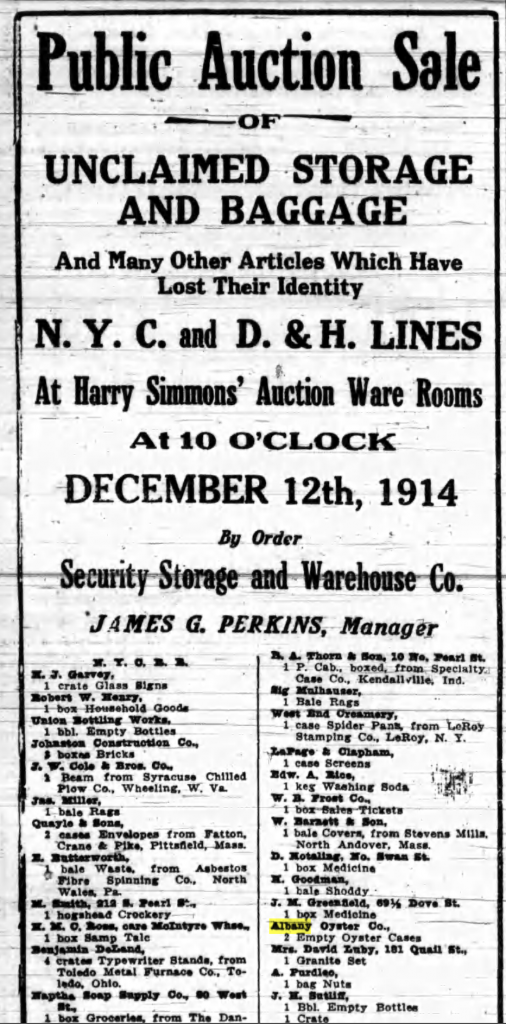 From the Times-Union, December 11, 1914, a reminder that the idea of people leaving behind things they’ve put into storage is nothing new, although a century ago they hadn’t figured out how to make it into entertainment. This announces a public auction sale of unclaimed storage and baggage, “and many other articles which have lost their identity” from the New York Central and Delaware and Hudson lines.
From the Times-Union, December 11, 1914, a reminder that the idea of people leaving behind things they’ve put into storage is nothing new, although a century ago they hadn’t figured out how to make it into entertainment. This announces a public auction sale of unclaimed storage and baggage, “and many other articles which have lost their identity” from the New York Central and Delaware and Hudson lines.
Harry Simmons proclaimed itself to be the oldest established and largest auction house in the state, located at 96 State Street, and 7 and 9 Howard Street. They auctioned off everything from home goods to homes. This would appear to be a particularly interesting sale of unclaimed items left behind in the railroads’ storage, but it raises some really interesting questions, since for most of the items, they knew who owned them and listed the names right here in the notice. So could the owners just come and claim these things, or had they already forfeited them? We don’t know.
So what were people leaving behind in railroad storage just a bit more than a century ago?
Barrels of empty bottles, boxes of bricks, a bag of sand. A bale of waste asbestos fibre, and a bale of shoddy. Four crates of typewriter stands. Boxes of groceries, cases of farina, packages of hominy grits. Ten drums of sweeping compound and a case of embalming fluid (accompanied by “1 Package,” contents unidentified but hopefully innocuous). Cots, mattresses, chairs and bed rails. Gas water heaters, various castings, machined wheels, and hogheads of crockery. Several stoves and bundles of tents.
We can’t determine if M.J. Collins of 180 Franklin Street was ever reunited with a couch, sent by the Standard Publishing and Premium Co. of Scranton, Pa. (perhaps a prize or redeemed trading stamps?). We will go to our grave now knowing if John McGinn of 20 Lark Street ever got back is box of paint from the Waterproof Paint Co. of Watertown, Mass. And the Woodward Co. may never have gotten the use of its “1 Spring” that had been left behind.

Leave a Reply